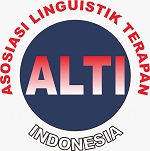Effect of Using Web-Blog on Writing Instruction for English Language Learners
DOI:
https://doi.org/10.33394/jollt.v8i4.2797Keywords:
Web-Blog, Writing instruction, English Learners,Abstract
References
Abas, I. H., & Abd Aziz, N. H. (2018). Model of the writing process and strategies of EFL proficient student writers: A case study of Indonesian learners. Pertanika Journal of Social Sciences and Humanities, 26(3), 1–28. http://www.pertanika.upm.edu.my/
Clyne, M., & Sharifian, F. (2008). English as an International Language: Challenges and Possibilities. Australian Review of Applied Linguistics, 31(3), 28.1-28.16. https://doi.org/10.1111/j.1467-971X.1993.tb00019.x
Fattah, S. F. E. S. A. (2016). The Effectiveness of Using Blogs as an Independent Learning Tool to Develop Reading Skills for University Students. Journal of Education and Practice, 7(32), 65–73.
Haerazi, & Irawan, L. A. (2019). Practicing Genre-Based Language Teaching Model to Improve Students’ Achievement of Writing Skills. Indonesian Journal of English Language Teaching and Applied Linguistics, 4(1), 9–18. https://doi.org/http://dx.doi.org/10.21093/ijeltal.v4i1.246
Hao, J., & Gao, B. (2017). Advantages and Disadvantages for Nurses of Using Social Media. Journal of Primary Health Care and General Practice, 1(1), 1–3.
Harmer, J. (2004). How to teach writing. Pearson Education Ltd.
Hong, W. (2008). Exploring Educational Use of Blogs in U.S. Education. US-China Education Review, 5(10), 34–38.
Hossain, M., & Quinn, R. J. (2012). Advantages and Disadvantages of Using a Blogging Activity in a College Euclidean Geometry Course. International Journal of Computer Technology and Electronics Engineering, 2(6), 25–26.
Indriani, L. (2019). Developing Pre-Service English Teachers’ Critical Thinking By Using Academic Journal Writing 4.0. Metathesis: Journal of English Language, Literature, and Teaching, 3(2), 117–123. https://doi.org/10.31002/metathesis.v3i2.1859
Jones, A. A., & Freeman, T. E. (2003). Imitation, Copying, and the Use of Models: Report Writing in an Introductory Physics Course. IEEE Transactions on Professional Communication, 46(3), 168–184. https://doi.org/10.1109/TPC.2003.816790
Manny-Ikan, E., Dagan, O., Berger Tikochinski, T., & Zorman, R. (2011). Using the Interactive White Board in Teaching and Learning – An Evaluation of the SMART CLASSROOM Pilot Project. Interdisciplinary Journal of E-Learning and Learning Objects, 7, 249–273. https://doi.org/10.28945/1523
Mart, Ç. T. (2013). Teaching grammar in context: Why and how? Theory and Practice in Language Studies, 3(1), 124–129. https://doi.org/10.4304/tpls.3.1.124-129
Ranaut, B. (2018). Importance of Good Business Writing Skills. International Journal of Language and Linguistics, 5(2), 32–41. https://doi.org/10.30845/ijll.v5n2a5
Sakat, A. A., Zin, M. Z. M., Muhamad, R., & Ahmad, A. (2012). Educational Technology Media Method in Teaching and Learning Progress. American Journal of Applied Sciences, 9(6), 874–878. https://doi.org/10.3844/ajassp.2012.874.878
Wibowo, F. E. (2019). The Effectiveness of Guided Reciprocal Peer Questioning (GRPQ) in Teaching Writing Viewed from Creativity. Metathesis: Journal of English Language, Literature, and Teaching, 3(1), 12–25. https://doi.org/10.31002/metathesis.v3i1.1190.
Downloads
Published
How to Cite
Issue
Section
Citation Check
License
License and Publishing Agreement
In submitting the manuscript to the journal, the authors certify that:
- They are authorized by their co-authors to enter into these arrangements.
- The work described has not been formally published before, except in the form of an abstract or as part of a published lecture, review, thesis, or overlay journal.
- That it is not under consideration for publication elsewhere,
- That its publication has been approved by all the author(s) and by the responsible authorities – tacitly or explicitly – of the institutes where the work has been carried out.
- They secure the right to reproduce any material that has already been published or copyrighted elsewhere.
- They agree to the following license and publishing agreement.
Copyright
Authors who publish with JOLLT Journal of Languages and Language Teaching agree to the following terms:
- Authors retain copyright and grant the journal right of first publication with the work simultaneously licensed under a Creative Commons Attribution License (CC BY-SA 4.0) that allows others to share the work with an acknowledgment of the work's authorship and initial publication in this journal.Â
- Authors are able to enter into separate, additional contractual arrangements for the non-exclusive distribution of the journal's published version of the work (e.g., post it to an institutional repository or publish it in a book), with an acknowledgment of its initial publication in this journal.
- Authors are permitted and encouraged to post their work online (e.g., in institutional repositories or on their website) prior to and during the submission process, as it can lead to productive exchanges, as well as earlier and greater citation of published work.
Licensing for Data Publication
- Open Data Commons Attribution License, http://www.opendatacommons.org/licenses/by/1.0/ (default)
This work is licensed under a Creative Commons Attribution-ShareAlike 4.0 International License.
















